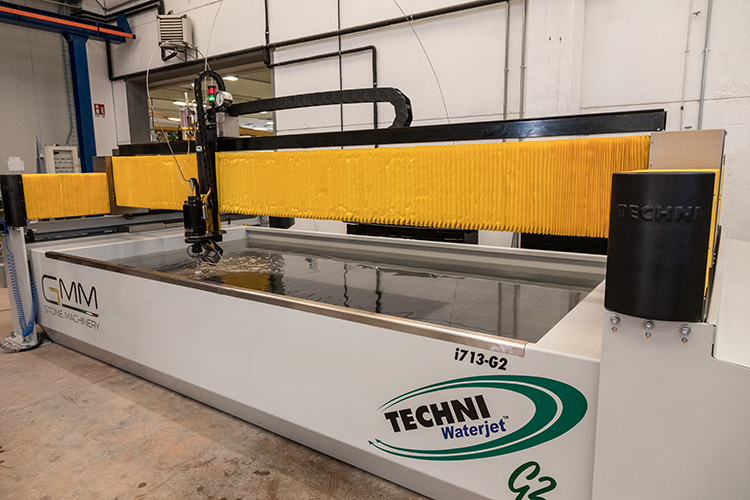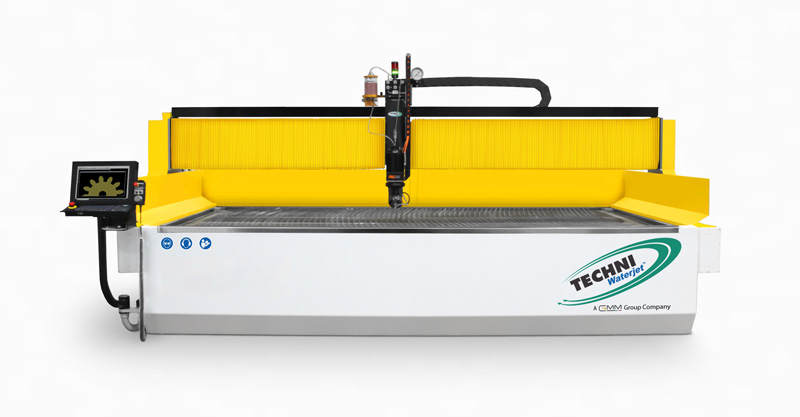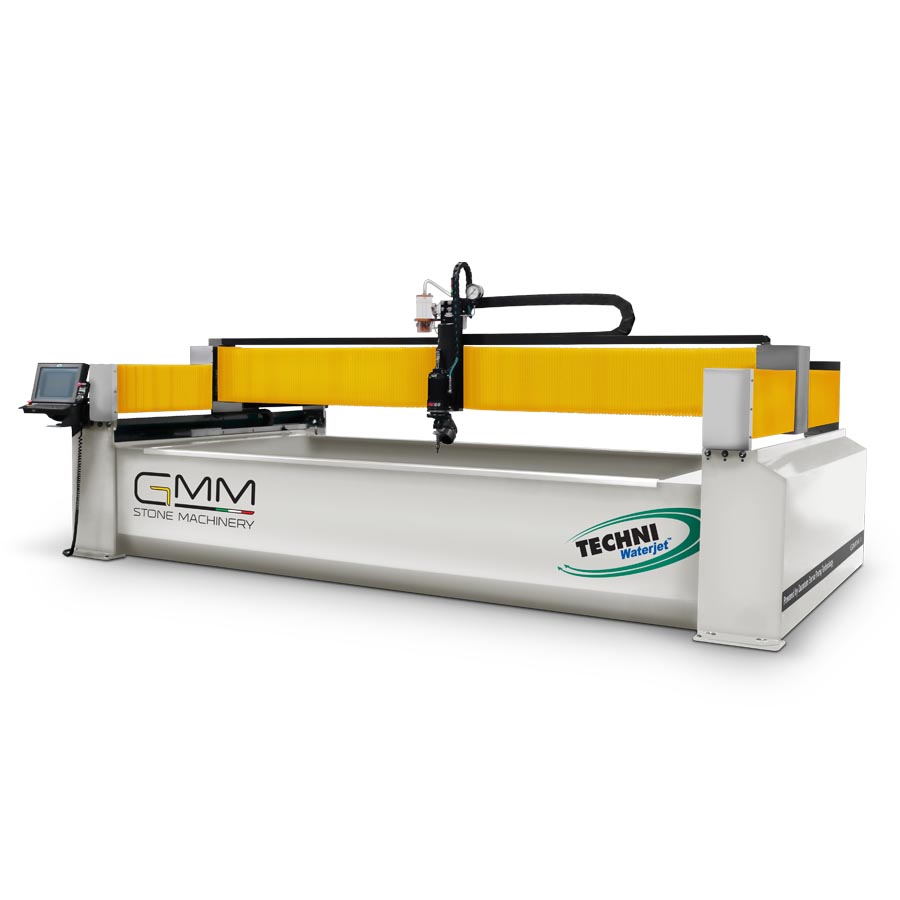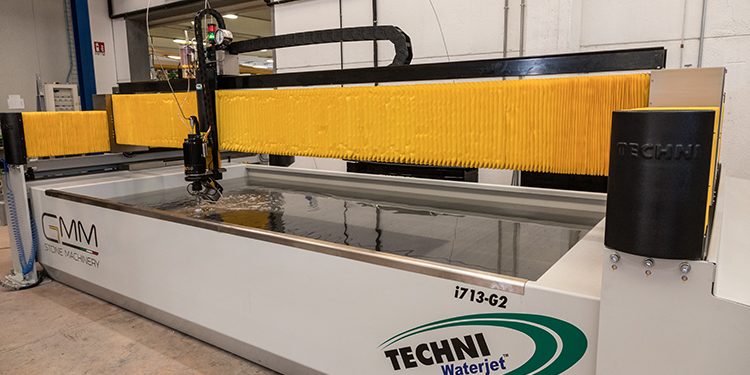
In an era where precision and efficiency are paramount, WaterJet technologies have emerged as a game-changer in the industrial landscape.
This innovative approach harnesses the power of high-pressure water streams, often combined with abrasive materials, to cut through a myriad of substances, ranging from metals to composites.
This guide delves deep into the intricacies of WaterJet technology, unraveling its significance, operational dynamics, and the indispensable role of operators in harnessing its full potential.
Understanding WaterJet Technology
At the heart of WaterJet technology lies a fascinating interplay of components and physics. Primarily, the system comprises a high-pressure pump, a cutting head with precision nozzles, an abrasive feed system, and a sophisticated control unit. Together, these elements orchestrate the WaterJet’s ability to slice through materials with remarkable accuracy and minimal waste.
High-Pressure Pump: The driving force that propels water at speeds capable of cutting.
Cutting Head and Nozzles: Precision tools that focus the water stream.
Abrasive Feed System: Introduces materials like garnet to enhance cutting power.
Control Unit: The brain of the operation, guiding the jet with precision.
The Role of Operators in WaterJet Technology
For WaterJet technology to reach its full potential, skilled operators are crucial. They not only manage the day-to-day running of the machines but also play a pivotal role in maintaining the delicate balance between operational efficiency and precision. Mastery over machine setup, understanding material properties, and having a keen eye for detail are just a few competencies that distinguish a proficient WaterJet operator.
Why Are WaterJet Technologies Important in Industry?
The versatility of WaterJet technology makes it indispensable across various sectors. Its applications span from aerospace, where precision is non-negotiable, to artistic endeavors that demand a gentle touch on delicate materials.
- Aerospace: For cutting and shaping advanced materials.
- Automotive: In manufacturing parts with complex geometries.
- Art and Design: Creating intricate patterns in materials like glass and stone.
Setting Up a WaterJet Machine
Setting up a WaterJet machine is a nuanced process, crucial for ensuring optimal performance. It involves calibrating the machine to suit specific material types and thicknesses, adjusting the abrasive feed, and programming the control unit to follow the desired cutting path with precision.
Waterjet cutting machines from Techni Waterjet showcase the critical importance of technical expertise and vast experience in the waterjet cutting industry. Renowned for their innovative solutions, Techni Waterjet has built a strong reputation for delivering high-quality machines, setting a standard in the industry
Operating WaterJet Machines
Operating a WaterJet machine requires a blend of technical knowledge and practical skill. The operator must meticulously manage the machine’s settings, from adjusting the water pressure to controlling the flow of abrasives. This intricate process is vital for achieving the desired cutting precision and efficiency.
What Are the Safety Protocols for Operating WaterJet Machines?
Safety is paramount when operating high-pressure machinery. Operators must adhere to rigorous safety protocols to prevent accidents and ensure a secure working environment. These include wearing appropriate protective gear, maintaining a safe distance from the cutting area, and regularly inspecting equipment for any signs of wear or damage.
Wear Protective Equipment: Such as goggles, gloves, and ear protection.
Regular Equipment Checks: To ensure everything is functioning correctly.
Safe Operation Procedures: Understanding and following the specific safety guidelines for operating WaterJet machines.
What Types of Materials Can Be Cut with WaterJet Technology?
One of the most remarkable aspects of WaterJet technology is its ability to cut through a diverse range of materials. From metals that require high precision to delicate materials like glass and composites, the versatility of WaterJet cutting is unparalleled.
- Metals: Including steel, aluminum, and copper.
- Composites: Such as carbon fiber and fiberglass.
- Glass: For intricate designs and shapes.
- Stone and Ceramics: Ideal for custom architectural elements.
Troubleshooting Common WaterJet Machine Issues
Even with the most advanced technology, operators may encounter issues. Common problems include irregular cutting patterns, nozzle blockages, and variations in water pressure. Effective troubleshooting involves understanding these issues’ root causes and implementing timely solutions.
Irregular Cutting Patterns: This may indicate a problem with the machine’s calibration.
Nozzle Blockages: Often caused by impurities in the abrasive or water supply.
Variations in Water Pressure: This can lead to inconsistent cutting quality.
Maintenance and Upkeep of WaterJet Machines

Routine maintenance is crucial for ensuring the optimal performance and longevity of WaterJet machines. This includes regular cleaning, replacing worn components, and calibrating the machine for accurate operation.
What Are the Long-Term Care Strategies for WaterJet Machines?
To maximize the lifespan and efficiency of WaterJet machines, operators should implement long-term care strategies. These include scheduled maintenance checks, using high-quality abrasives, and staying updated with the latest operational techniques.
Scheduled Maintenance Checks: Regularly inspecting and servicing the machine.
Use of High-Quality Abrasives: Ensures consistent cutting quality and reduces wear.
Staying Updated: Continuously learning about new techniques and advancements in WaterJet technology.
Advancements in WaterJet Technology
Recent years have seen significant advancements in WaterJet technology, with innovations focusing on improving precision, reducing waste, and enhancing overall efficiency. These advancements include automated control systems, more efficient pumps, and advanced nozzle designs.
How Has Automation Impacted WaterJet Technologies?
Automation has been a game-changer in the world of WaterJet technology. It has enabled more precise control over cutting processes, enhanced repeatability, and reduced the need for manual intervention. This not only improves the efficiency of operations but also allows for more complex and intricate designs to be executed with high precision.
What Are the Latest Software Developments for WaterJet Operations?
Software advancements have been pivotal in elevating WaterJet technology. The latest software solutions offer sophisticated design capabilities, improved machine control, and enhanced cutting process monitoring. This technological evolution ensures that WaterJet machines stay at the forefront of industrial cutting solutions.
The Economics of WaterJet Cutting: Analyzing Cost-Effectiveness
Understanding the economics of WaterJet cutting is crucial for industries to evaluate its viability. This involves considering various cost factors such as equipment investment, operational costs, and maintenance expenses.
Equipment Investment: Initial cost of purchasing and installing WaterJet machines.
Operational Costs: Includes consumables like abrasives and utilities like water and electricity.
Maintenance Expenses: Regular upkeep and occasional repairs to ensure optimal performance.
Comparing WaterJet Cutting to Other Cutting Technologies
When comparing WaterJet cutting to other methods like laser and plasma cutting, it’s essential to consider factors such as material compatibility, precision, and operational cost. Each method has its unique advantages and drawbacks, making them suitable for different applications.
Environmental and Safety Considerations in WaterJet Cutting
The environmental impact and safety considerations of WaterJet technology are critical aspects. Unlike some other cutting methods, WaterJet cutting does not produce hazardous materials or significant heat, making it a safer and more environmentally friendly option.
Future Trends in WaterJet Technology
 The future of WaterJet technology is shaped by trends like AI and machine learning integration, which are set to revolutionize how these systems operate. These advancements promise to enhance precision further, reduce waste, and improve the overall efficiency of WaterJet cutting processes.
The future of WaterJet technology is shaped by trends like AI and machine learning integration, which are set to revolutionize how these systems operate. These advancements promise to enhance precision further, reduce waste, and improve the overall efficiency of WaterJet cutting processes.
What Is the Potential for AI and Machine Learning in WaterJet Technology?
AI and machine learning can potentially transform WaterJet technology by enabling more intelligent and adaptive control systems. These technologies can optimize cutting parameters in real time, predict maintenance needs, and even learn from past operations to improve future performance.
Sustainable Practices in WaterJet Technology
Sustainability is becoming increasingly important in industrial operations, and WaterJet technology is no exception. Eco-friendly practices such as recycling used water and abrasives, optimizing cutting paths to reduce waste, and using environmentally friendly materials are gaining traction.
Training and Certification for WaterJet Operators
Embarking on a career in WaterJet technology requires a solid foundation of training and certification. These programs not only impart essential skills but also ensure adherence to industry standards.
What Are the Essential Skills for Advanced WaterJet Operation?
The path to becoming a proficient WaterJet operator is paved with a set of critical skills. These range from understanding the machinery to mastering the fine art of precision cutting.
The Importance of Continuous Learning in WaterJet Technology
The field of WaterJet technology is ever-evolving. Continuous learning is not just beneficial; it’s necessary to keep pace with technological advancements and emerging techniques.
WaterJet Cutting Parameters and Optimization
The effectiveness of WaterJet cutting hinges on understanding and optimizing various parameters. From pressure settings to nozzle types, each element plays a crucial role in achieving the desired outcome.
What Are the Cutting Tolerances in WaterJet Cutting?
Precision is the hallmark of WaterJet technology. This section delves into the exact numbers that define cutting tolerances, providing a clear picture of the technology’s capabilities.
Customization and Special Applications of WaterJet Technology
WaterJet technology’s versatility allows for an array of custom solutions and applications. From intricate art pieces to specialized industrial components, the possibilities are endless.
How Does WaterJet Technology Cater to Creative and Artistic Applications?
The fusion of technology and creativity opens up new horizons. WaterJet technology’s role in artistic applications showcases its adaptability and precision in crafting intricate designs.
What Are the Specialized Applications in Aerospace and Automotive Industries?
In sectors like the aerospace and automotive industries, WaterJet technology plays a pivotal role. Its ability to handle specialized applications demonstrates its indispensability in these industries.
Challenges and Limitations of WaterJet Cutting
While WaterJet cutting is powerful, it’s not without its challenges and limitations. Understanding these obstacles is key to maximizing the technology’s potential.
What Are the Material Limitations for WaterJet Cutting?
Exploring the spectrum of materials suitable for WaterJet cutting reveals its versatility and also its limitations. This section discusses materials that pose challenges or are unsuitable for WaterJet processing.
Overcoming Technical Challenges in WaterJet Operation
Every technology has its hurdles, and WaterJet cutting is no exception. Here, we delve into strategies and innovations aimed at overcoming these technical challenges, ensuring smooth and efficient operations.
Case Studies in WaterJet Technology
The true test of any technology lies in its practical applications. This section presents a collection of case studies, showcasing how WaterJet technology has been successfully implemented across various industries.
WaterJet Cutting vs. Traditional Cutting Methods
Understanding WaterJet cutting’s place in the industry requires a comparison with traditional methods. This section provides a detailed analysis, weighing the pros and cons of each approach.
The Future Workforce for WaterJet Technology
As WaterJet technology evolves, so does the need for a skilled workforce. This discussion focuses on future trends and the evolving role of operators in this dynamic field.
Conclusion
In conclusion, WaterJet technology stands as a testament to human ingenuity and its capability to transform industries. Its future, rich with potential, promises further innovations and applications that will continue to shape the world of precision cutting.


